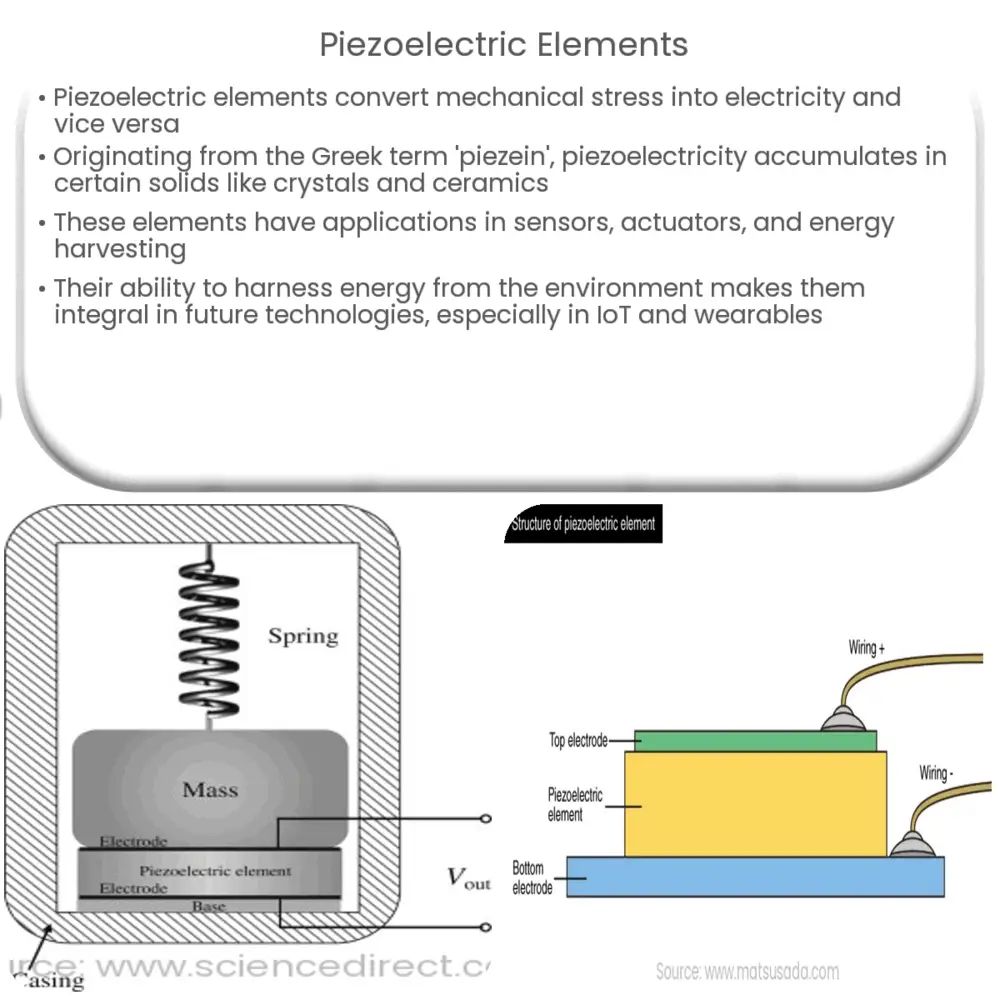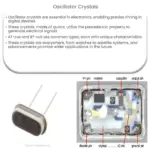Explore the fascinating world of piezoelectric elements: their workings, applications, historical development, and future potential.

Piezoelectric Elements: A Comprehensive Overview
The world of technology is vast, with a plethora of components playing integral roles in the creation of a myriad of devices. Among these, the concept of ‘Piezoelectric Elements’ holds a unique place. Piezoelectricity, a word originating from the Greek term ‘piezein’ meaning ‘to squeeze’, is a fascinating scientific phenomenon that has had a profound impact on our technology-driven society.
Understanding Piezoelectricity
Piezoelectricity is the electric charge that accumulates in certain solid materials, such as crystals, certain ceramics, and biological matter like bone, DNA, and various proteins, in response to applied mechanical stress. This unique characteristic of these materials allows them to convert mechanical energy into electrical energy, and vice versa, opening up a world of technological possibilities.
How Piezoelectric Elements Work
To comprehend how piezoelectric elements function, we must first grasp the fundamental structure of these materials. They comprise a crystalline structure with polarized domains – regions where the charges are naturally aligned. When a mechanical stress is applied to these materials, the alignment of these domains changes, creating an electric charge.
- Direct Piezoelectric Effect: This phenomenon describes the generation of an electric charge in response to applied mechanical stress.
- Converse Piezoelectric Effect: In contrast, this effect refers to the deformation or strain experienced by a piezoelectric material when an electric field is applied.
Applications of Piezoelectric Elements
Piezoelectric elements have found their way into an array of applications, owing to their unique ability to convert mechanical stress into electricity and vice versa. Some common uses include:
- Sensors: These elements are used in various types of sensors, like pressure sensors, accelerometers, and vibration sensors.
- Actuators: Piezoelectric actuators convert electrical energy into precise linear motion, making them essential in fields such as nanotechnology and precision mechanics.
- Energy Harvesting: Piezoelectric materials can capture and convert waste mechanical energy (like vibrations) into usable electrical energy.
It’s clear to see that the innovative functionality of piezoelectric elements has made them an indispensable part of modern technology. In the subsequent part of this article, we will delve deeper into the fascinating world of piezoelectric elements, exploring more about their historical development, the science behind their operation, and their future potential.
Historical Development of Piezoelectric Elements
The discovery of piezoelectricity can be traced back to 1880, when brothers Pierre and Jacques Curie found that when pressure was applied to quartz crystals, an electric charge was produced. This marked the first recognition of the direct piezoelectric effect. The converse effect was mathematically deduced from fundamental thermodynamic principles by Gabriel Lippmann in 1881.
The Science Behind Piezoelectric Elements
The operation of piezoelectric elements can be attributed to the displacement of ions in their crystal lattice structure. When pressure is applied to these elements, the ions shift, causing an imbalance of the electrical charge within the structure, resulting in an electric field. The reverse process happens when an electric field is applied, leading to a change in the physical structure of the crystal.
- Quartz: Quartz is a naturally occurring piezoelectric material that has been used in a variety of applications, from watches to ultrasound generation.
- PZT: Lead zirconate titanate (PZT) is a commonly used synthetic piezoelectric material. It’s particularly popular due to its ability to exhibit significantly higher piezoelectric effects than quartz.
Future Potential of Piezoelectric Elements
The future of piezoelectric elements is indeed promising. With the advent of the Internet of Things (IoT), the demand for energy-efficient and self-sustaining systems is on the rise. Piezoelectric elements, with their ability to harvest energy from the environment, fit the bill perfectly. Researchers are also exploring the use of piezoelectric materials in wearable technology, potentially powering devices with the user’s movements.
Conclusion
In conclusion, piezoelectric elements have revolutionized the way we perceive the relationship between mechanical stress and electricity. From humble beginnings with quartz crystals to the sophisticated synthetic materials of today, the journey of piezoelectricity is a testament to the ingenuity and innovativeness of human science and technology. With their far-reaching applications and tremendous future potential, piezoelectric elements continue to shape the frontiers of technological advancements, promising an exciting future for us all.



